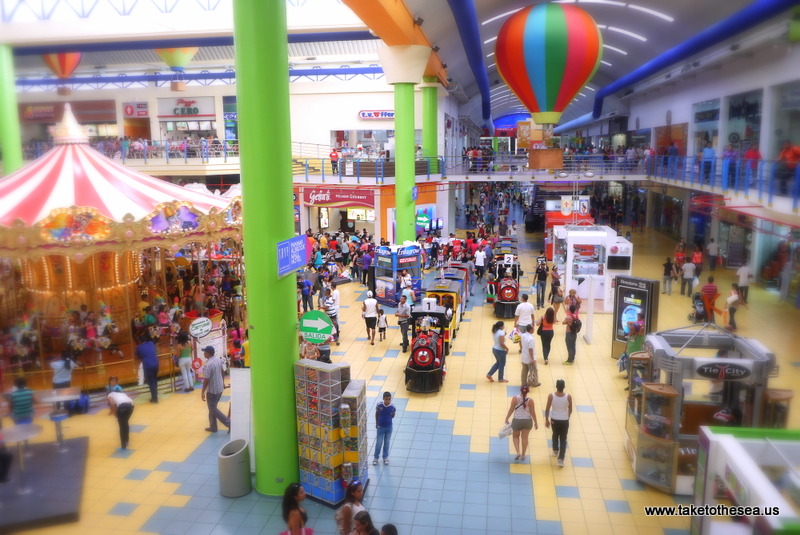













Panama City is a land of stark contrasts. Gleaming, new skyscrapers pierce the sky above the crumbling ruins of Panama Viejo. New buildings are sprouting from the ground everywhere you turn, but don’t spend too much time looking up because the sidewalks may randomly spit you out into an onslaught of traffic or a calf high mud puddle.
Recently restored colonial buildings that house high end restaurants abut dilapidated buildings where squatters have laid claim. Conspiracies abound about a fire that recently burned out a squatter settlement, killing 12 people, preparing the colonial facade for future development in the trendiest area.
Pristine, sterile, air conditioned malls are a bus stop away from busy, loud, outdoor stalls that crowd the sidewalks and spill onto the streets, selling the most beautiful produce you’ve ever seen. The fruits and vegetables in the outdoor market seem a work of art and are generall half or a third of the price of their dull, refrigerated, plastic packaged supermarket counterparts.
Business men in Mercedes roll past indigenous women and their children in traditional garb, who are clutching shopping bags that boast designer brands.
Old school open fishing pangas barely held together with fibergass and resin supply the fish for a newly remodeled fish market where Panamanians of all backgrounds dine on ceviche made from the catch of the day.
The new malecon, with sparkling play structures and exercise equipment and perfectly manicured grass, snakes along the water where trash washes to shore in abundance. Walkers, runners, roller bladers, bikers, stragglers, gawkers, and mobile food carts compete for space on the walkway that spans the city from Trump’s sail shaped tower to the local brothels where you can also find fresh pressed chicha (fruit juice) and some of the best street food I’ve had in a long time. Walk half a block through an arch shaded by delicate pink flowers, and you will be transported to Panama’s up and coming micro-brewery, La Rana Dorada (The Golden Frog), which offers $5 artesanal beers and is mere steps away from some of the most exclusive nighttime hangouts.
We sit on the centuries old seawall, homemade rum and cokes in hand, watching the pulsing multi-colored lights on the new highway that encircles Casco Viejo, the 17 foot tides exposing 400 meters of muck. The view from the high rises is greatly improved when the filth is covered by the surging tide.
Loudly painted school buses with glaring sound systems run the same routes as the plastic, air conditioned, automated city buses. The proudly individualized “pirate buses” are being bought out, decommissioned and replaced with their homogenous, state-sponsored counterparts.
In one night, wealthy young Panameños will spend the equivalent of what others make in a month on an inflated bar tab. $700 a month is good money for a young man working for AeroNaval, 12 hours a day 6 days a week. Others easily spend this amount, in a single day, on the gas it requires to take their yacht out to the Perlas Islands.
You can have breakfast, lunch or dinner for ~$2.00 or ~$50.00, sometimes on the same block. The same beer can cost $0.50 or $8.00 depending on where you drink it.
The city seems a land of abundance, but looks can be deceiving. Its rapid growth has outstripped its infrastructure and its resources. During dry season, low water levels in Gatun lake compromise drinking water and power production. Businesses in the city reluctantly complied with a request to turn off air conditioning at night to relieve pressure on the overextended power supply. Western Panama is being dammed to sustain the power hungry city. Upstream deforestation and development threatens water quality and quantity. Sewage treatment is an ongoing problem, with some untreated waste being discharged directly to the Gulf. Air quality suffers as more and more cars congest the streets and highways. The city’s transportation system is heavily subsidized, with a brand new subway/lightrail just coming on line and yet transportation in the rest of Panama continues to rise with gas prices. The city boasts large, undeveloped natural areas that are home to monkeys, birds, deer, sloths. The Gulf is bursting with fish and whales and dolphins. This concrete playground is surrounded by wildness that is slowly being tamed.
Panama City is at the crossroads of the world. Money pulses through its veins and the chasm between wealth and poverty is ever present and ever growing. Glam and grit with every eyeful. A visual feast, a socio-economic riddle, a rapidly changing landscape.
The best description I have ever read of Panama City and it applies to the whole country; the excess and opulence found in the city compared to the basic, bare bones way of life elsewhere. And the contrast sharpens with the new subway in the city, the canal expansion while the rest of the country is left to fall further behind.
Thanks, Carey. Wish we could have run into you guys there. Perhaps in Costa Rica?
Panama has one of the worst income distributions in the world. You have captured what this looks like on the ground in Panama City. Great piece!
Thanks, Paul! Did you guys make it to Ecuador?